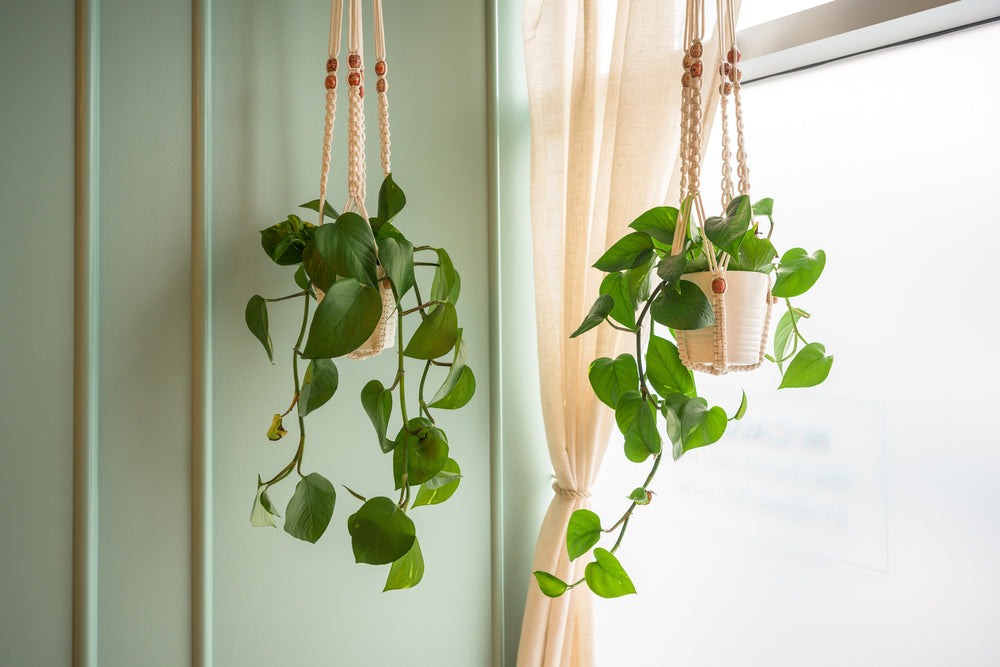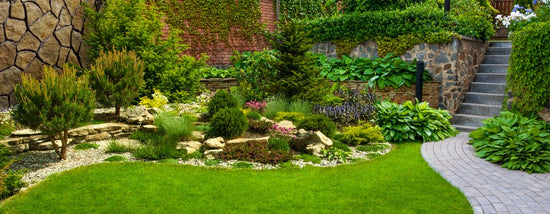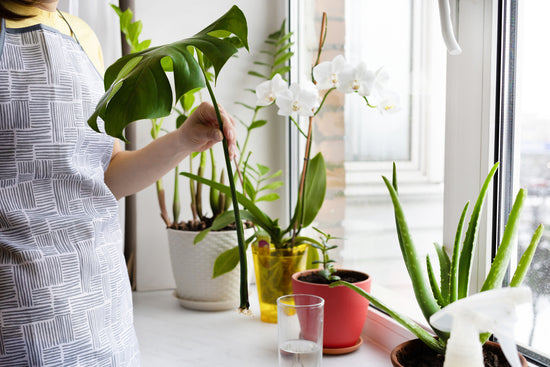Decorating your home can be tricky. But sometimes, something comes along that makes the whole process much easier and even fun.
Hanging plants and planters often tend to add that element of fun and elegance - an element much-needed. If you've saturated all your floor plant decor options, you can always just look up for more inspiration!
However, hanging plants indoors, like all other plants, come with their own plant care requirements.

• Hanging Plants Care Tips
Hanging plant pots mean that your plant will be suspended from the ceiling with little to no floor time. This allows you to add layers to your indoor space and to create depth, making your room look bigger and even more spacious.
Follow these hanging plant care tips to ensure that all your plants maintain their good health!
1. Choosing the Right Hanging Plants
What this means is that you must remember that not all plants can be used in hanging plant pots. Some plants are meant to be floor plants while some others have great potential as ceiling plants.
For easier care, remember to opt for plants that need relatively lesser care and attention. Some of the best indoor plants for hanging planters are Money Plant or Devil's Ivy, Spider Plant, and Chrysanthemums.
2. Selecting the Right Hanging Pots and Planters

Choose pots, planters, and hanging baskets that work well hanging from the ceiling. Sturdy and stable is what really you're looking for. Well-draining pots are also extremely important as your plants will need space to breathe and receive enough oxygen to survive.
You can make use of ceramic pots paired with macrame planters or metal pots with metallic planters.
3. Use the Right Potting Mix and Soil for your Hanging Plants
Use a lighter, well-aerated soil and potting mix so that your hanging planters and pots do not have to bear too much weight and stress. consider adding perlite or dried tree bark for extra aeration and make sure that the soil retains moisture without getting soggy or heavy.
4. Find the Correct Placement

Place your hanging plants in areas where they will be able to receive enough light according to their individual requirements. Plants need direct, bright and indirect or low light according to their needs. So, you must ensure that you place your plants in different areas of your home according to these needs.
You can ensure that your hanging plants get enough light by hanging them up near windows and balconies.
5. Establishing a Watering Routine
Ensure that you establish and follow a watering routine for your plants. Wherever you may choose to place them, remember to acknowledge the needs of all your plants and water them according to these. All of them may have varied needs and so, understanding them beforehand is key.
Remember to let the top inch of the soil dry out before watering again and do not overwater as clogged soil can lead to root rot.
Buy Watering Tools
6. Supporting and Maintaining Your Hanging Plants and Planters
Remember to consistently check the stability of your hanging pots and planters, and if you ever feel like you need to readjust them in order to maintain balance, do so immediately. Instant action is key as imbalance can throw the plant off key. Use appropriate hangers or hooks that you know are capable of supporting the plant's weight. Trim long tendrils to promote a compact and bushy growth habit.

Other plant care tips that you must remember to follow include proper and timely fertilization. But remember not to over-fertilize your plants and dilute your fertilizers before use. Also, keep a look out for common pests like aphids and spider mites because the sooner you detect them, the easier they are to get rid of.
With proper care and timely management, your hanging plants will continue to grace your home and enhance your aesthetics for a long time. Happy gardening!










